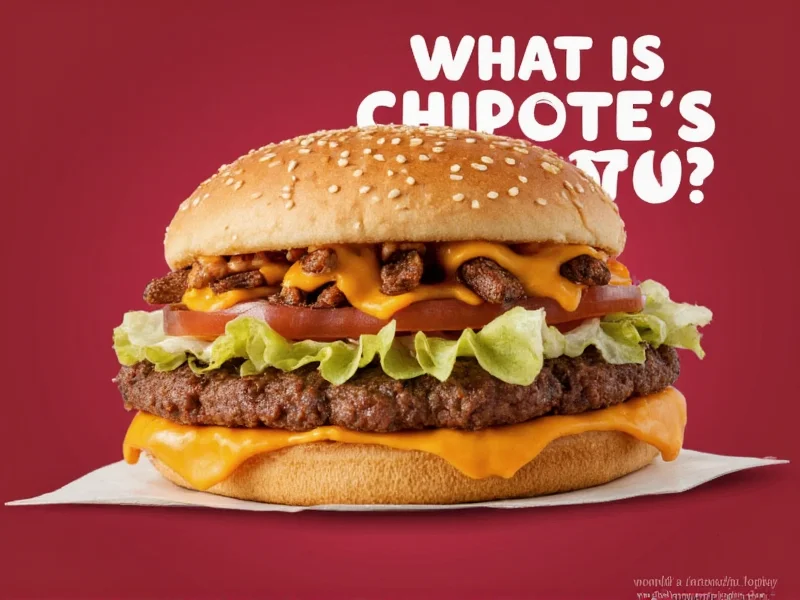When searching for \"what is chipolte,\" most users actually seek information about Chipotle Mexican Grill or the culinary ingredient known as chipotle. This common misspelling creates confusion between the restaurant brand and the food ingredient. Understanding both meanings provides clarity for anyone researching this term.
Chipotle Mexican Grill: The Restaurant Chain
Founded in 1993 by Steve Ells in Denver, Colorado, Chipotle Mexican Grill has grown into one of America's most recognized fast-casual dining brands. The company operates over 3,000 locations across the United States, Canada, Europe, and Asia. Chipotle distinguishes itself through its \"Food With Integrity\" philosophy, emphasizing responsibly sourced ingredients including:
- Organic and non-GMO ingredients where possible
- Antibiotic-free meat
- Locally sourced produce
- Sustainably raised proteins
The restaurant's assembly-line format allows customers to customize burritos, bowls, tacos, and salads with fresh ingredients prepared daily. Unlike traditional fast food, Chipotle prepares most ingredients in-house rather than using pre-processed components.
Chipotle Peppers: The Culinary Ingredient
Before becoming a restaurant name, \"chipotle\" referred to a specific type of pepper in Mexican cuisine. A chipotle (pronounced \"chih-POHT-lay\") is a smoke-dried jalapeño pepper. The name comes from the Nahuatl (Aztec) words \"chil\" (chile pepper) and \"poctli\" (smoke).
Chefs use chipotle peppers to add distinctive smoky heat to dishes. They typically measure between 2,500-8,000 Scoville heat units, making them moderately spicy. Common forms include:
| Form | Description | Common Uses |
|---|---|---|
| Whole dried | Complete smoke-dried jalapeños | Rehydrated for sauces and stews |
| Chipotle in adobo | Peppers canned in a tangy tomato-based sauce | Adding flavor to marinades and soups |
| Chipotle powder | Ground dried chipotles | Seasoning rubs and spice blends |
| Chipotle hot sauce | Liquid sauce with chipotle flavor | Table condiment and cooking ingredient |
Why People Confuse \"Chipolte\" and \"Chipotle\"
The misspelling \"chipolte\" occurs frequently due to several linguistic factors:
- English speakers often rearrange syllables in unfamiliar Spanish words
- The \"tl\" combination in \"chipotle\" is uncommon in English
- Auto-correct features sometimes change the correct spelling
- Similar-sounding words like \"polenta\" influence the misspelling
When researching \"what is chipolte,\" search engines typically recognize this as a misspelling of \"chipotle\" and return results for the correctly spelled term. Understanding this common error helps users find accurate information about both the restaurant chain and the culinary ingredient.
Key Differences Between the Two Meanings
Many people searching for \"what is chipolte\" don't realize they're encountering two distinct concepts. Here's how to differentiate them:
- Capitalization: \"Chipotle\" with a capital C typically refers to the restaurant chain, while \"chipotle\" in lowercase refers to the pepper.
- Context: Restaurant discussions mention burritos, bowls, and locations, while culinary references discuss heat levels, smoking processes, and recipes.
- Plural forms: The restaurant never uses plural form, while \"chipotles\" correctly refers to multiple peppers.
Recognizing these distinctions helps clarify search results when investigating \"what is chipolte\" or the correctly spelled \"chipotle.\"
Common Questions About Chipotle
People searching for \"what is chipolte\" often have related questions about pronunciation, usage, and brand information. Understanding both meanings addresses most of these queries effectively.
Frequently Asked Questions
Is 'chipolte' the correct spelling for the restaurant or pepper?
No, the correct spelling is 'chipotle' for both the restaurant chain and the smoked jalapeño pepper. 'Chipolte' is a common misspelling that reverses the 't' and 'l' in the word.
What's the difference between Chipotle the restaurant and chipotle the pepper?
Chipotle Mexican Grill is a restaurant chain founded in 1993, while chipotle (without capitalization) refers to a smoke-dried jalapeño pepper used in Mexican cooking. The restaurant name comes from the Nahuatl word for the pepper.
How do you pronounce 'chipotle' correctly?
The correct pronunciation is 'chih-POHT-lay' (IPA: /tʃɪˈpoʊ teɪ/). Many English speakers mistakenly say 'chip-oh-tay' or 'chip-oh-lee,' but the authentic pronunciation emphasizes the second syllable with an 'l' sound at the end.
Are chipotle peppers very spicy?
Chipotle peppers range from 2,500-8,000 Scoville heat units, making them moderately spicy - similar to fresh jalapeños but with a distinctive smoky flavor. They're significantly milder than habaneros or ghost peppers but provide noticeable heat in most dishes.
Why did the restaurant choose the name 'Chipotle'?
Founder Steve Ells chose 'Chipotle' because it represents a key ingredient in Mexican cuisine and reflects the restaurant's focus on authentic flavors. The name comes from the Nahuatl (Aztec) words 'chil' (chile pepper) and 'poctli' (smoke), describing the smoke-dried preparation method of the pepper.











 浙公网安备
33010002000092号
浙公网安备
33010002000092号 浙B2-20120091-4
浙B2-20120091-4